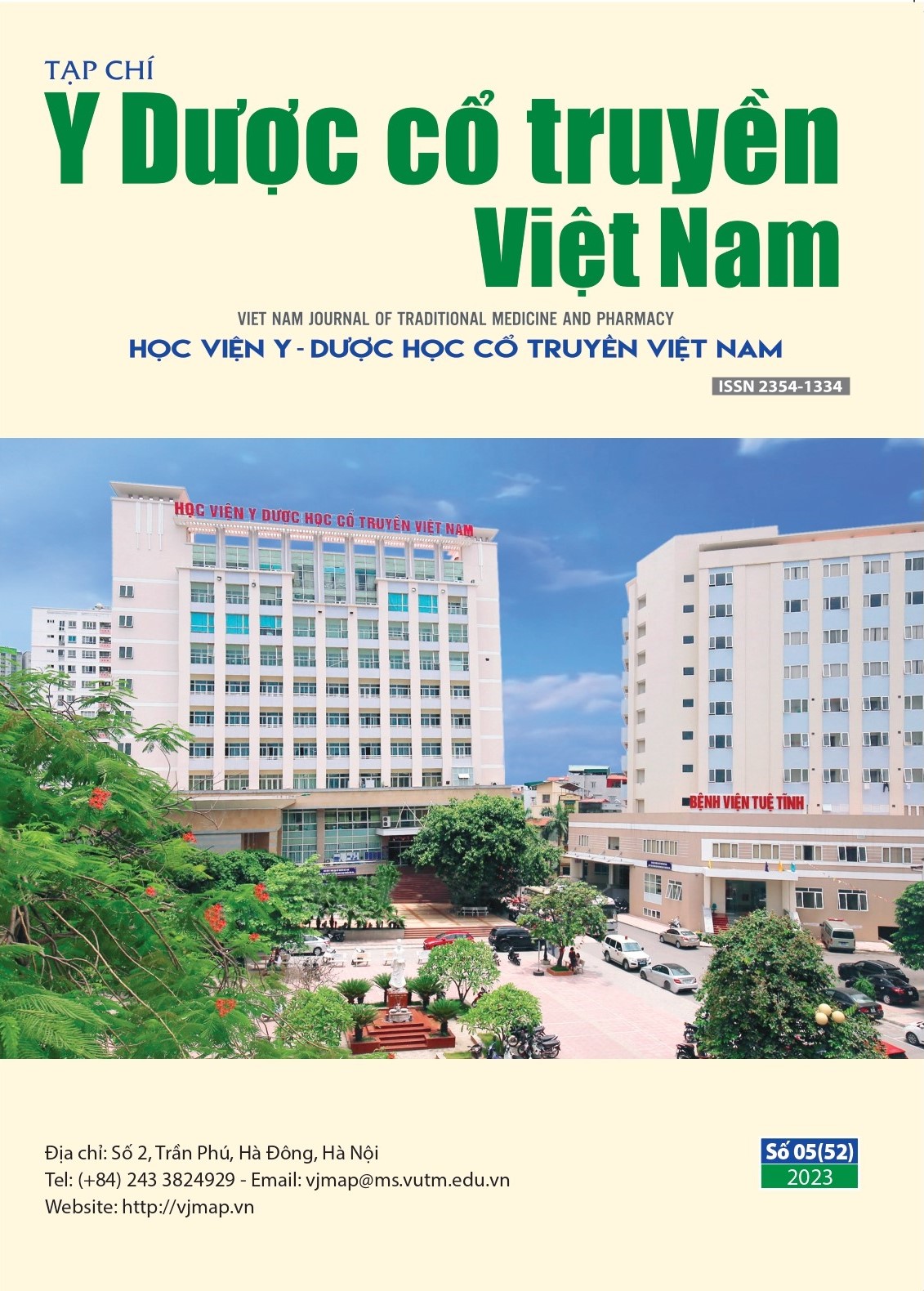The clinical features of patients in the study to evaluate the effect of peptic ulcer treatment of Kien ty chi thong - HV
Nội dung chính của bài viết
Tóm tắt
Objectives: To investigate the clinical features of patients in the study to evaluate the effect of peptic ulcer treatment of Kien ty chi thong - HV granules.
Subjects and methods: Open clinical intervention, comparing before and after treatment. Patients from 18 years old, regardless of gender or occupation, who voluntarily participate in the study, were examined and diagnosed with gastroenteritis through clinical examination and endoscopy with precise standards.
Results: With 35 patients participating in the research, the highest prevalence was in age group from 51 years old, accounting for 85.7%, women had a greater illness prevalence than males (71.4% of the study members). In term of professional characteristics, the group of officials has the greatest prevalence of sickness, at 48.6%. The group of patients with a BMI of 23-24.9 (overweight) accounts for the highest rate at 40.0%. Stress, eating hot food, and drinking alcohol are disease-related variables that account for 37.1%, 22.9%, and 20%, respectively. The most diseased time is from 1 to 5 years with 18 individuals, accounting for 51.4% of total. Patients with the highest history of using modern medicine accounted for 45.7%, followed by the group combining modern medicine + traditional medicine, accounting for 25.7%.
Conclusions: The patients were mostly overweight women office workers, above 51 years old with prolonged stress. Most patients had had the disease from 1 to 5 years and had been treated with modern medicine.
Chi tiết bài viết
Từ khóa
Peptic ulcer, Kien ty chi thong - HV granules, Modern Medicine, Traditional Medicine.
Tài liệu tham khảo
2. Sayehmiri K, Abangah G, Kalvandi G, Tavan H, Aazami S. Prevalence of peptic ulcer in Iran: Systematic review and metaanalysis methods. Journal of research in medical sciences: the official journal of Isfahan University of Medical Sciences, 2018, 23, pp.8.
3. Ministry of Health, Bach Mai Hospital, Associate Professor Dao Xuan Co, MD, PhD. Internal Diagnosis and Treatment, Medical Publshing House, 2022; pp.696
4. Wen Z, Li X, Lu Q, et al. Health relatedquality of life in patients with chronic gastritisand peptic ulcer and factors with impact: a longitudinal study. BMC gastroenterology, Aug 20 2014, 14, pp.149.

